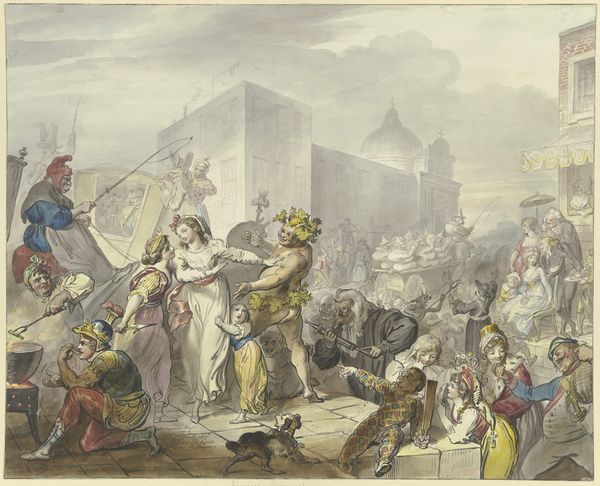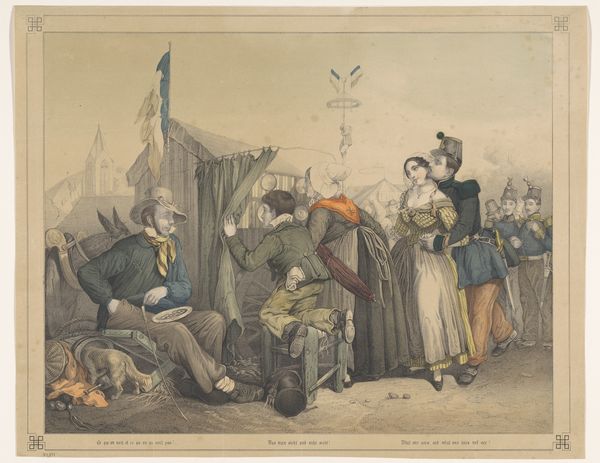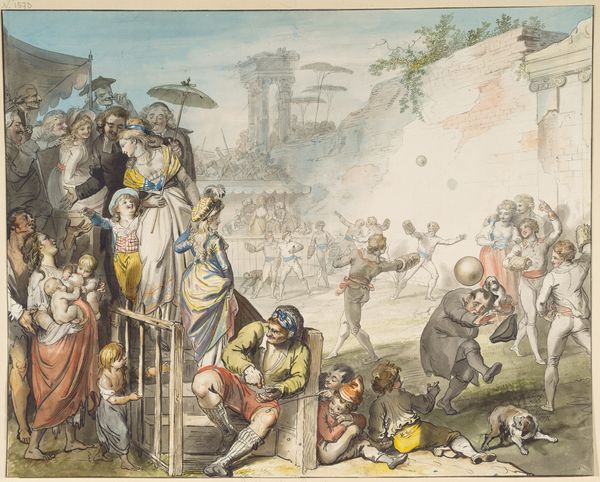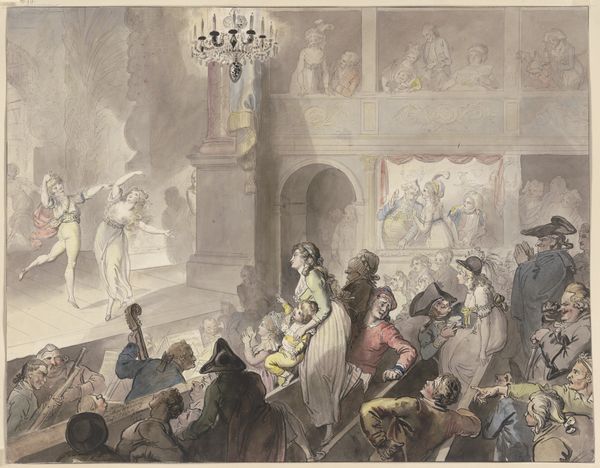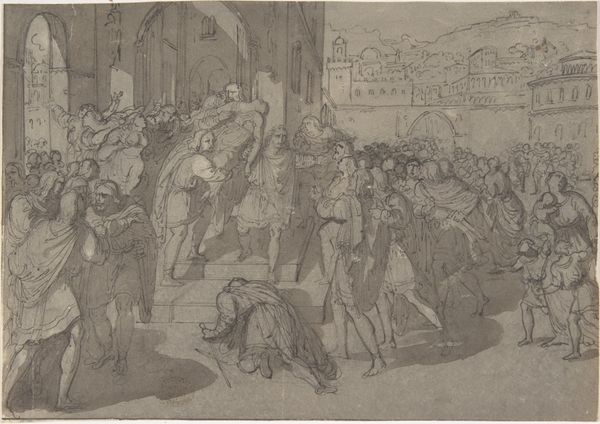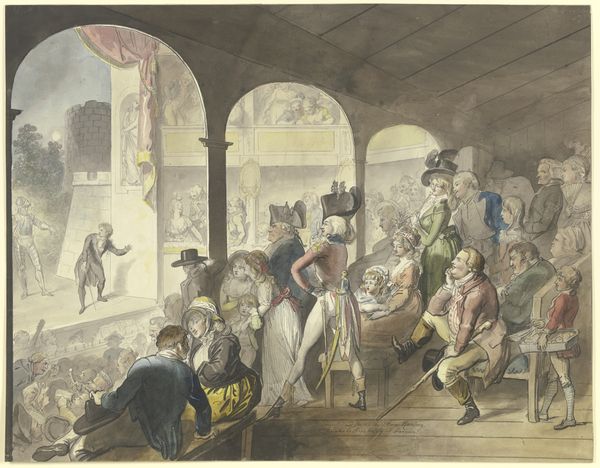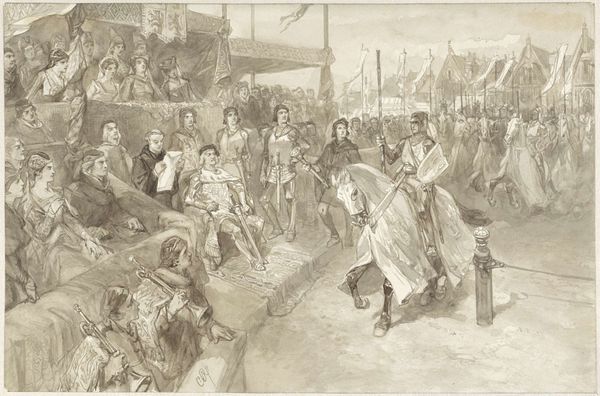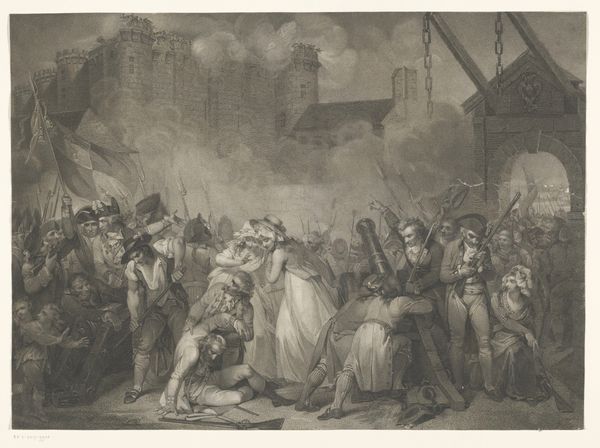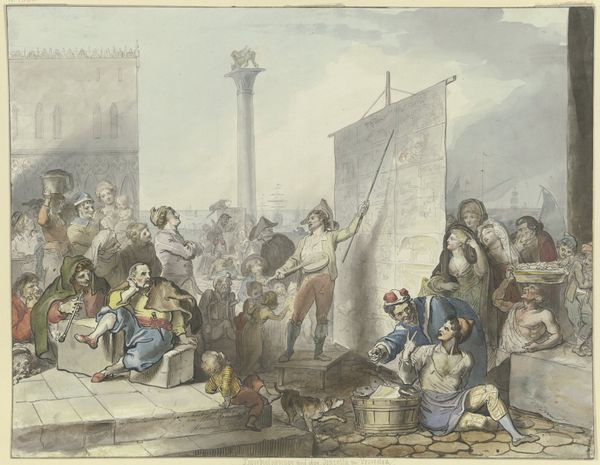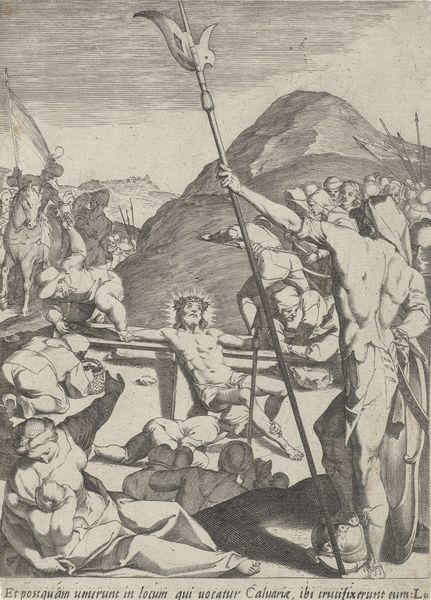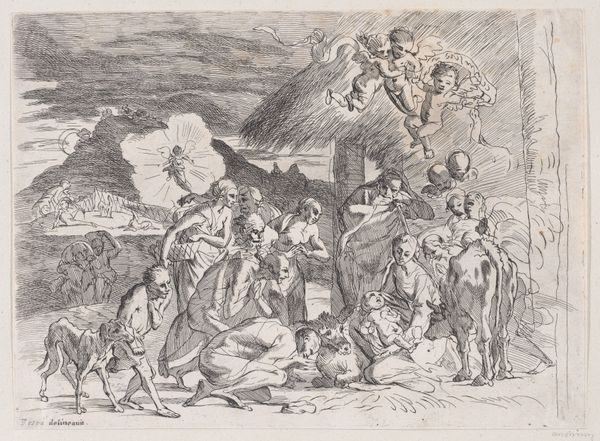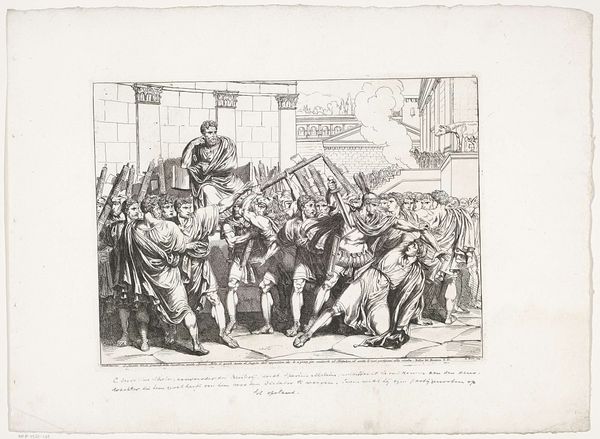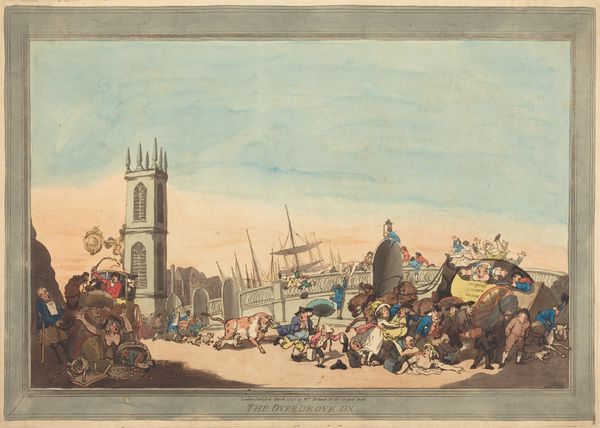
drawing, coloured-pencil, watercolor, ink
#
drawing
#
coloured-pencil
#
watercolor
#
ink
#
coloured pencil
#
classicism
#
cityscape
#
genre-painting
#
watercolor
Copyright: Public Domain
Editor: We're looking at "Improvisator auf der Piazetta in Venedig" by Johann Heinrich Ramberg, created using ink, watercolor and colored pencil. It's a busy scene, with many characters placed within this interesting composition! I'm particularly struck by how Ramberg uses light to guide the viewer's eye. What are your initial observations about this work? Curator: Note how Ramberg deploys a limited, yet effective, palette. The washes of color serve to differentiate planes and bring forward figures, almost stage-like. The work calls attention to the relationship between form and function; the figures’ arrangement dictates a reading of importance and relation between the many, with the titular performer standing as the main conduit for our viewing. Are you observing the structure of forms and how it directs our vision through this space? Editor: Yes, I do. I see how the figures sort of spiral around that central orator. Can you say more about the form? What do you think it communicates? Curator: Notice that this composition's spatial logic seems flattened. Ramberg emphasizes planar construction and outline instead of conventional perspective, even where the cityscape tries to offer this. Considering the medium, ink and watercolor lend themselves to this flatness as the eye struggles to interpret any sculptural quality of these figures; and the classicism styling serves the linearity and symmetry of this stage scene. Editor: So, focusing on form gives us clues about both the artistic choices and the potential meanings embedded in this work, regardless of the historical context, and more as clues to see the intent, through technical approaches like medium choice and symmetry, line versus shadow and depth. Thanks! Curator: Precisely. And from there, a world of interpretations opens! Analyzing artistic composition opens dialogue around intent of not only the artist, but ourselves.
Comments
No comments
Be the first to comment and join the conversation on the ultimate creative platform.
